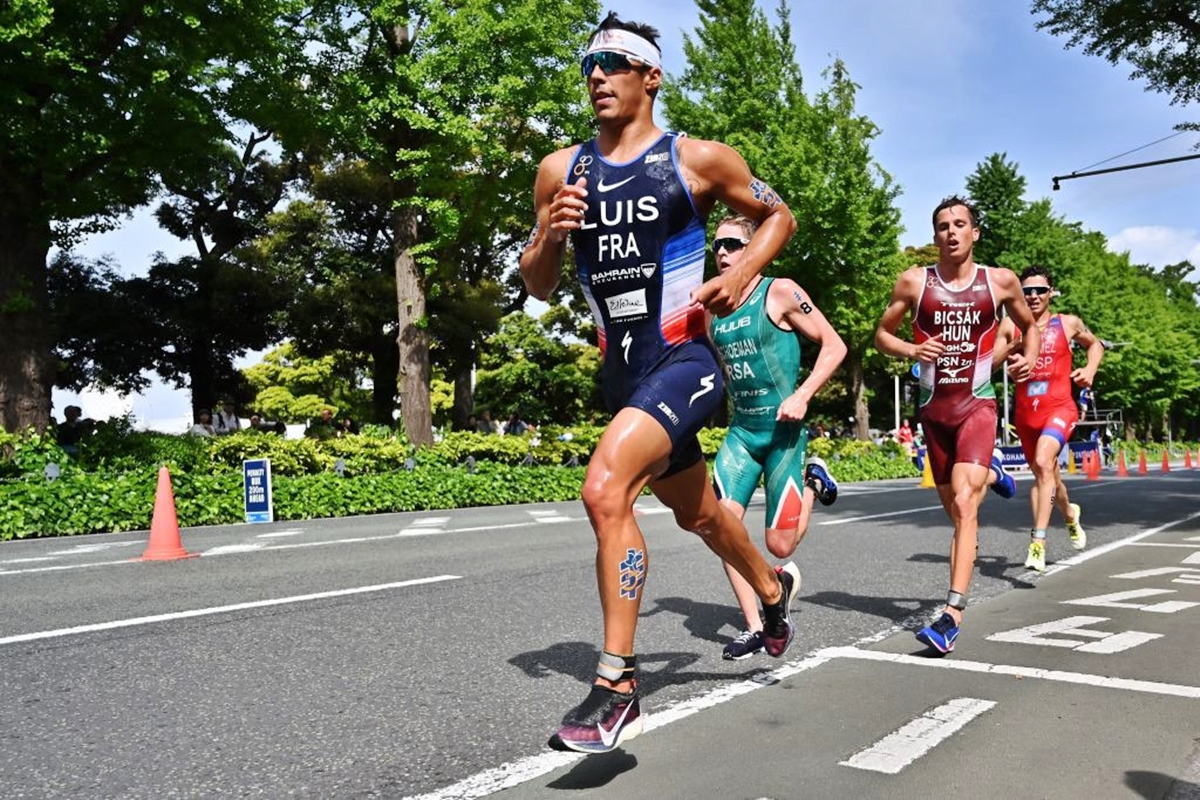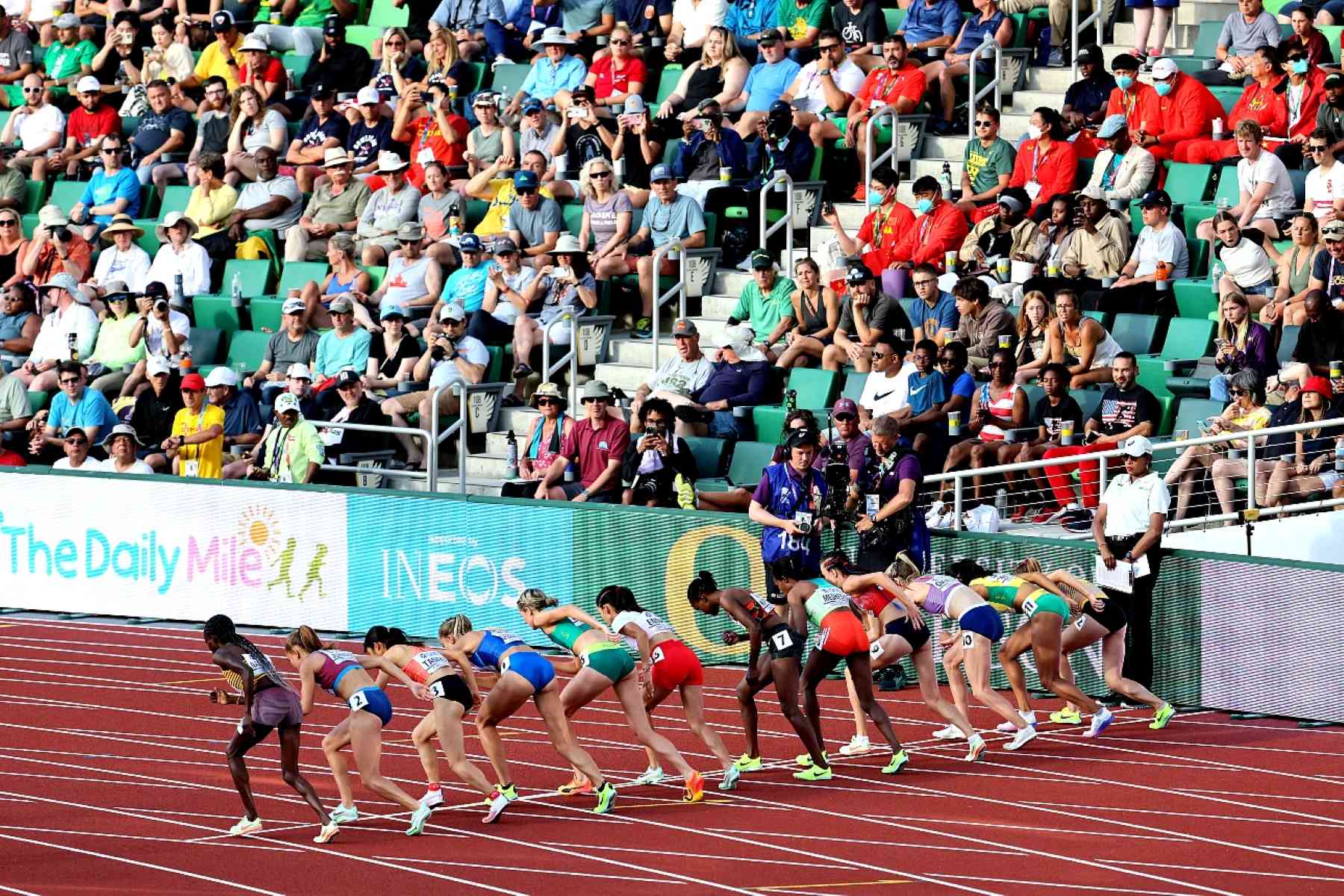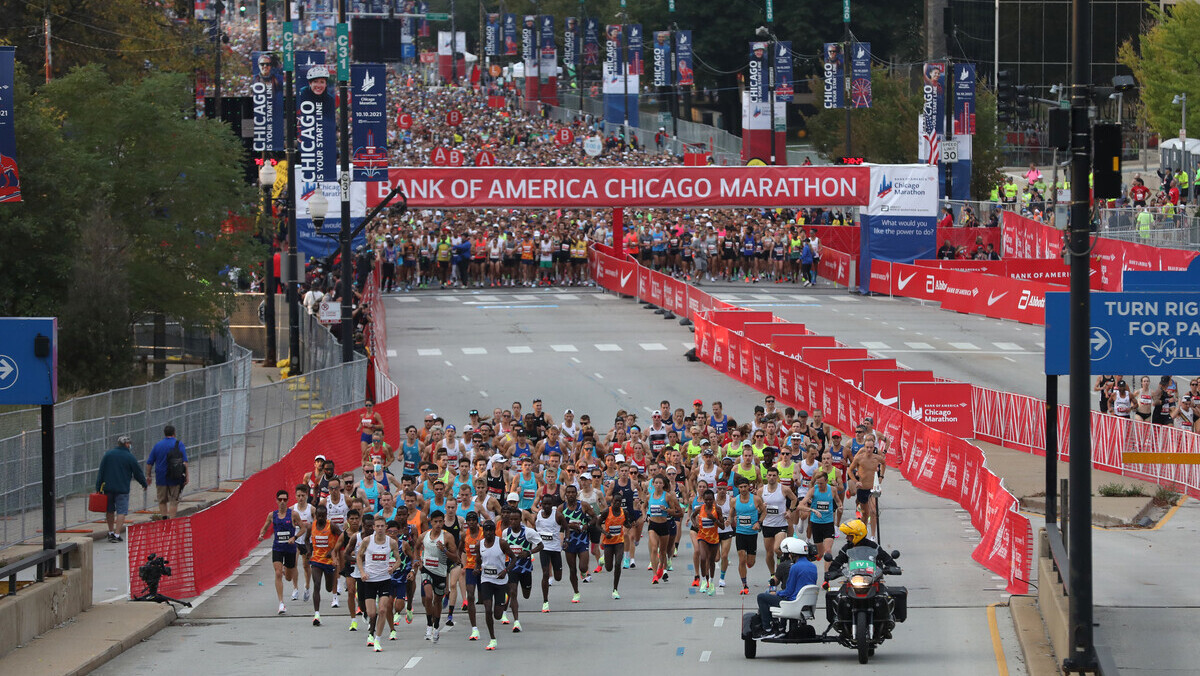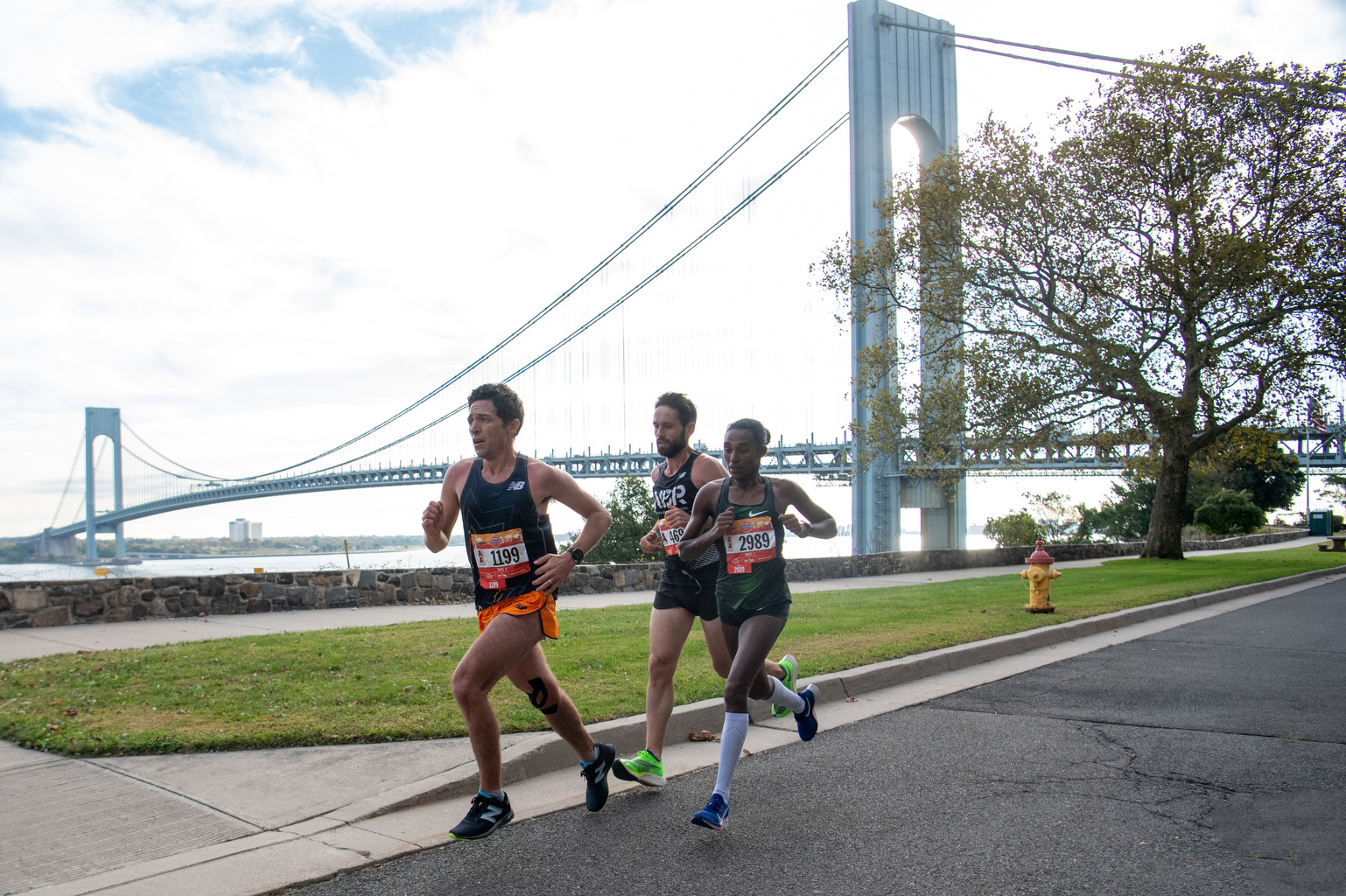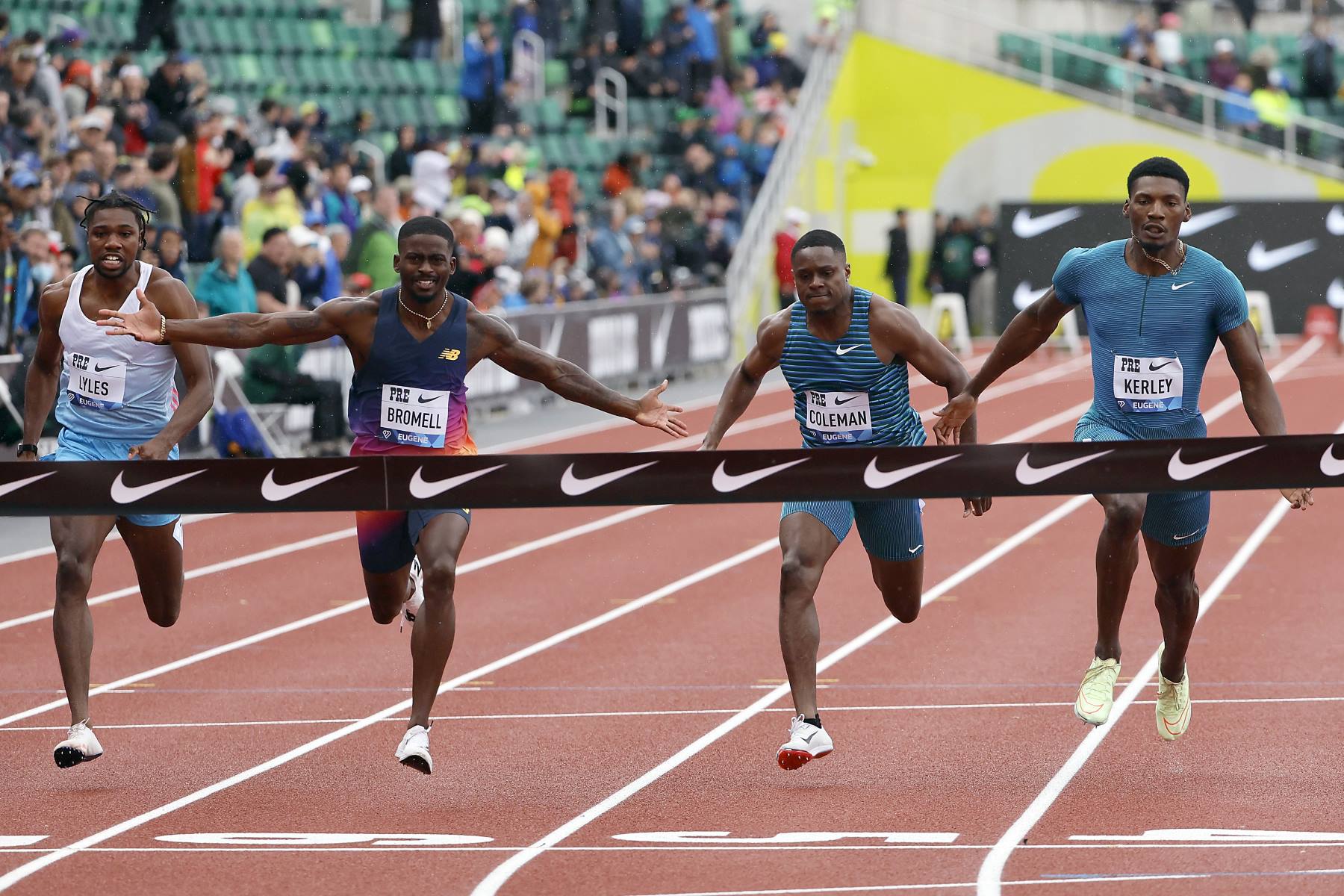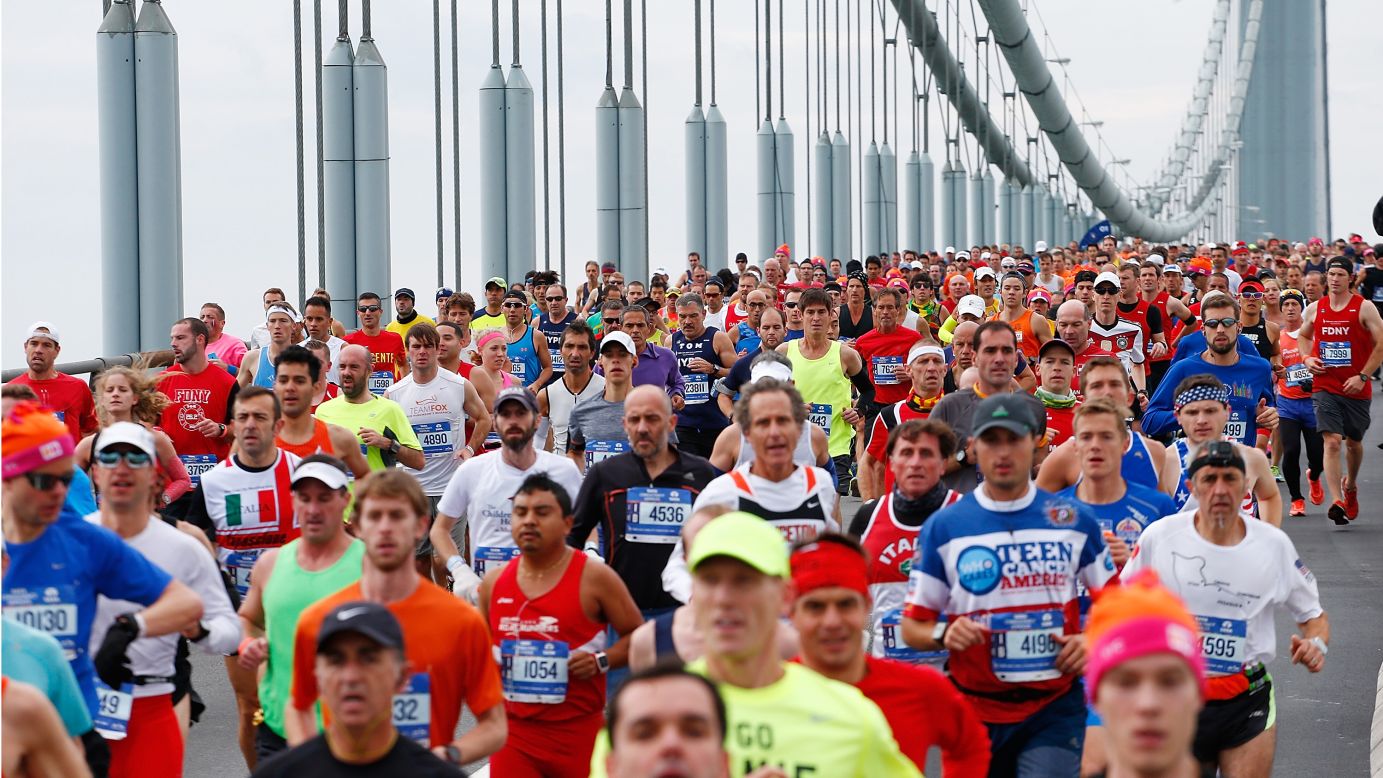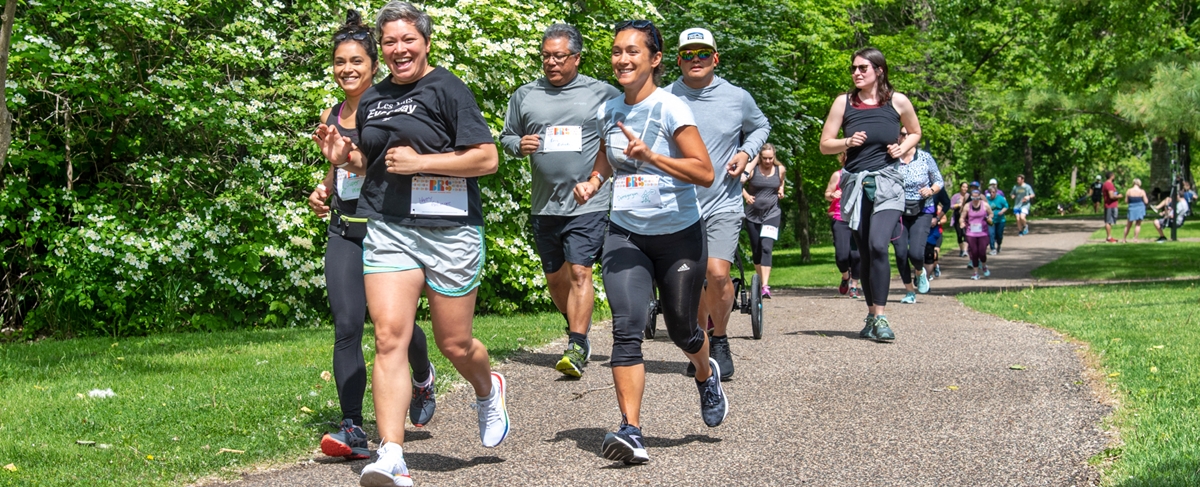Home>Misc>Featured>How New Media Affects Athletic Performance
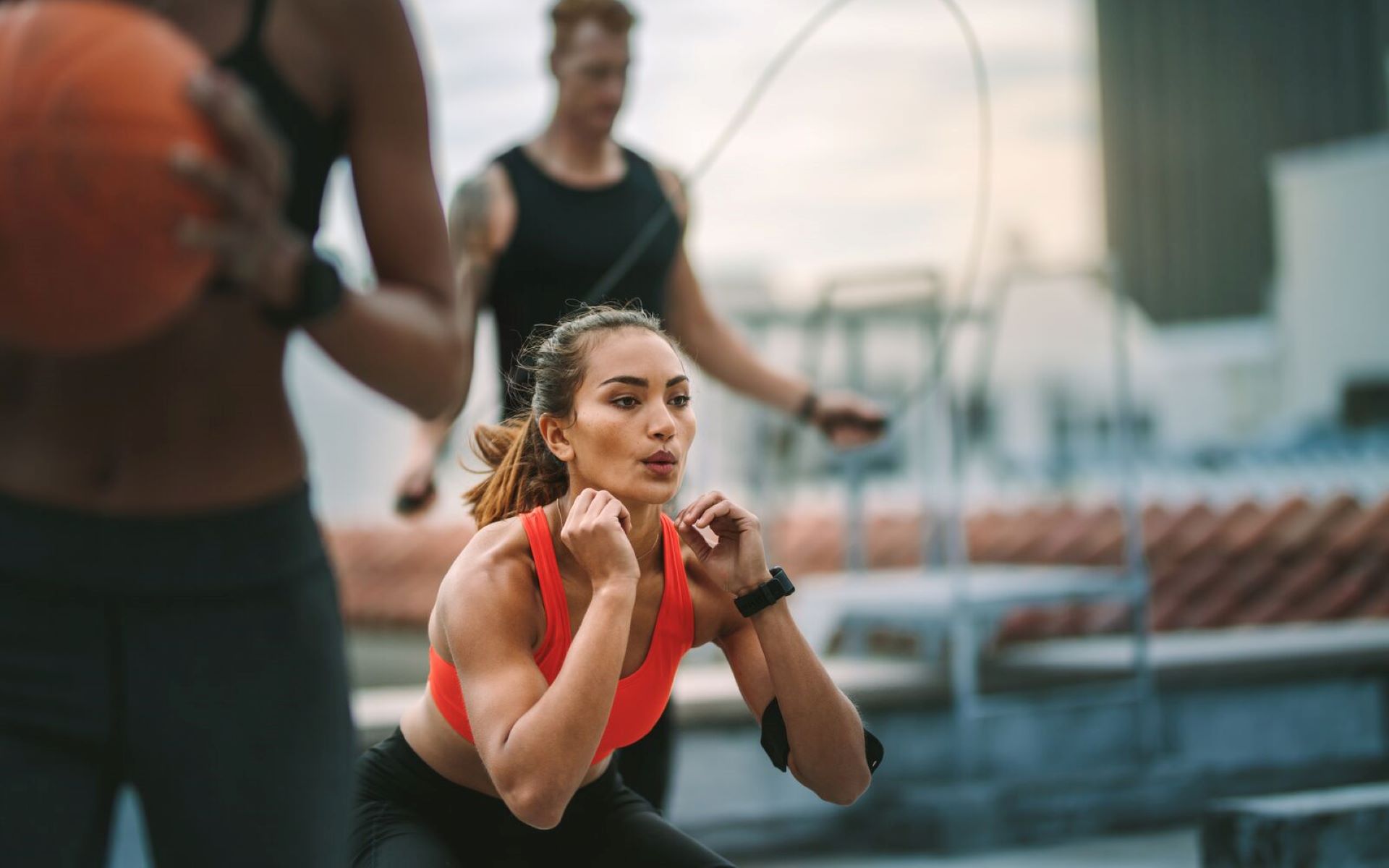

Featured
How New Media Affects Athletic Performance
Modified: October 18, 2023
Discover how new media impacts athletes' performance in this featured article. Explore the key role of technology in enhancing training routines and optimizing results.
Introduction
The advent of new media has revolutionized the way we consume information, connect with others, and engage in various activities. This paradigm shift has had a profound impact on the world of sports, particularly in relation to athletic performance. The traditional media landscape, consisting of television, radio, and print publications, has long been the primary means of disseminating sports news and updates to the masses.
However, with the rise of digital platforms and the widespread availability of high-speed internet, new media channels such as social media, podcasts, streaming platforms, and online publications have emerged as influential players in the sports industry. These new mediums have not only changed how sports content is accessed and consumed but also how athletes perform and interact with their fans.
Today, athletes have an unprecedented level of control over their personal brand and the ability to directly engage with their audience through various social media platforms. This has allowed for a more intimate connection between athletes and their fans, with the ability to share behind-the-scenes insights, training routines, and personal moments. In turn, fans are able to feel a closer connection to their favorite athletes and have real-time access to their performances and achievements.
Moreover, the rise of new media has paved the way for a greater emphasis on data-driven analytics and performance monitoring in sports. Sports organizations and individual athletes now have access to a myriad of tools and technologies that enable them to track and analyze performance metrics, providing valuable insights to enhance training strategies, identify areas for improvement, and optimize overall athletic performance.
However, as with any technological advancement, new media also poses challenges and potential drawbacks. Athletes may face increased scrutiny, privacy concerns, and the pressure to maintain a curated online presence. Additionally, the constant stream of information and instant feedback from fans and critics alike can have a significant impact on an athlete’s psychological well-being and mental health.
In this article, we will explore the evolution of media, the role of traditional media in athletic performance, and the profound impact of new media on athletes. We will delve into the use of social media by athletes, the integration of performance monitoring and analysis through new media, and the effect of new media on an athlete’s psychological well-being. Through case studies and examples, we will examine how athletes have navigated the world of new media and the implications it has on their performance and overall well-being.
Evolution of Media
The evolution of media has been a dynamic and transformative process, shaped by advancements in technology and changes in consumer behavior. Traditionally, media outlets such as television, radio, and print publications held a monopoly on sports coverage, serving as the primary source of information for sports enthusiasts. These channels brought sports events and news to the masses, often in a scheduled and curated format.
However, the emergence of new technologies and platforms brought about a significant shift in how media is consumed and delivered. The rise of the internet and the proliferation of mobile devices have revolutionized the way we access and engage with media content. This has given birth to new media channels, including social media platforms, podcasts, live streaming platforms, and online publications.
Social media platforms such as Facebook, Twitter, Instagram, and YouTube have played a pivotal role in transforming the sports media landscape. These platforms have provided athletes, teams, and sports organizations with direct access to their fanbase, allowing for real-time communication, content sharing, and engagement. Athletes have become their own content creators, leveraging social media to build their personal brand and connect with fans on a more intimate level.
Podcasts have emerged as a popular medium for in-depth analysis, interviews, and storytelling in the sports industry. Athletes, coaches, and sports personalities now have the opportunity to share their insights, experiences, and perspectives through podcasts, reaching a global audience and fostering a deeper connection with their fans.
Live streaming platforms, such as Twitch and YouTube Live, have revolutionized the way sports events are consumed. These platforms enable fans to watch live sporting events, interviews, and exclusive content, all in real-time. With the rise of esports, live streaming has become a primary avenue for fans to engage with their favorite gaming athletes and teams.
Online publications, including blogs and independent sports websites, have gained traction as credible and diverse sources of sports news and analysis. These platforms provide alternative perspectives, in-depth coverage, and niche content that caters to specific sports interests.
In summary, the evolution of media has not only diversified the sports media landscape but has also democratized the production and consumption of sports content. Athletes now have more control over their personal brand and direct access to their fans, while fans have greater access to a variety of sports content and can actively participate in the sports conversation. The advent of new media has fundamentally changed the way we experience and engage with sports, forever transforming the relationship between athletes, teams, media outlets, and fans.
Role of Media in Sports
The media has always played a significant role in the world of sports, serving as a bridge between athletes and fans. It has the power to shape public perception, generate excitement, and create a sense of community among sports enthusiasts. The role of media in sports goes beyond simply broadcasting games; it encompasses various aspects that contribute to the overall sports experience.
One of the primary roles of media in sports is to provide coverage of sporting events. Television networks, radio stations, and online platforms dedicate substantial resources to broadcasting live games, providing play-by-play commentary, and analyzing the action on and off the field. This coverage allows fans who may not be able to attend games in person to stay connected and engaged with their favorite teams and players.
In addition to live coverage, media outlets also provide extensive pre and post-game analysis, interviews with athletes and coaches, and statistical information. These features help fans gain a deeper understanding of the game and allow them to form opinions and discuss the sport with others. Media coverage also provides exposure for athletes and teams, helping to build their brand and attract sponsors.
Media plays a crucial role in promoting sports events. Through advertising, news articles, and social media campaigns, media outlets generate excitement and create buzz around games, tournaments, and competitions. This promotion not only drives ticket sales but also increases viewership, ensuring that the sports industry remains financially viable.
Media coverage also shapes the narrative surrounding athletes, teams, and sports events. Journalists and commentators have the power to influence public opinion and perception through their reporting and analysis. This can have both positive and negative consequences for athletes and teams, as their performances, behavior, and personal lives are scrutinized and discussed by the media and fans alike.
Furthermore, media coverage has played a significant role in promoting diversity and inclusion in sports. By highlighting the achievements and challenges faced by athletes from underrepresented groups, media outlets have helped raise awareness and drive change in the sports industry, pushing for equal opportunities and representation.
Overall, the role of media in sports is multifaceted, ranging from providing comprehensive coverage of sporting events to shaping public opinion and promoting diversity. Media plays a vital role in connecting athletes and fans, enhancing the sports experience, and driving the growth and development of the sports industry.
Traditional Media and Athletic Performance
Traditional media, including television, radio, and print publications, has long been a dominant force in the coverage and analysis of athletic performance. These outlets have played a crucial role in shaping the narrative surrounding athletes, teams, and sporting events. However, the impact of traditional media on athletic performance goes beyond mere coverage and promotion.
Television broadcasts of sports events have provided athletes with a platform to showcase their skills and performances to a wide audience. These broadcasts often include expert commentary and analysis, providing valuable insights and feedback that athletes can use to improve their performance. Coaches and trainers can also study these broadcasts to assess strategies, analyze opponents, and identify areas for improvement.
Print publications, such as newspapers and sports magazines, have historically provided in-depth analysis and feature stories on athletes and their performance. Athletes have benefited from positive coverage, building their reputation and attracting endorsements and sponsorship deals. However, negative coverage or criticism from traditional media can also have a significant impact on an athlete’s mental state and performance.
Radio broadcasts of sports events have provided real-time updates and commentary, allowing fans and athletes alike to stay connected to the action. Athletes may even listen to radio broadcasts of their own games to get a different perspective and gain insights that can optimize their performance.
Furthermore, traditional media plays a crucial role in the promotion and exposure of athletes and sports events. Athletes rely on media coverage to gain recognition, attract sponsors, and secure lucrative endorsement deals. Traditional media outlets have the power to generate excitement, create storylines, and build anticipation for upcoming events, thereby enhancing an athlete’s performance through increased fan engagement and support.
However, the influence of traditional media is not without its challenges. Athletes face immense pressure to perform under the scrutiny of media coverage, as every mistake, setback, or poor performance may be amplified and criticized. The constant presence of traditional media can also intrude on an athlete’s personal life, affecting their mental well-being and potentially impacting their performance on the field.
In summary, traditional media has played a significant role in shaping athlete performance by providing a platform for showcasing skills, offering insights and analysis, and driving promotion and exposure. However, it is important to recognize the challenges and potential drawbacks that come with traditional media coverage, as athletes navigate the fine line between benefiting from media exposure and managing the pressures that it brings.
Impact of New Media on Athletic Performance
The rise of new media, including social media platforms, podcasts, streaming services, and online publications, has had a profound impact on athletic performance. These new channels have not only changed how sports content is consumed but also how athletes train, interact with fans, and perceive their own performance.
Social media platforms have become powerful tools for athletes to connect with their fans on a personal level, share their journey, and build their personal brand. Athletes can now directly engage with their audience, providing behind-the-scenes insights, training updates, and glimpses into their personal life. This level of interaction has created a more intimate connection between athletes and fans, fostering a sense of loyalty and support.
Social media also provides a platform for athletes to showcase their skills and achievements. They can share highlights, record personal bests, and celebrate victories with their followers. These platforms not only allow athletes to gain recognition and a wider fanbase but also motivate them to push harder and perform at their best.
Furthermore, the availability of performance monitoring and analysis tools through new media has revolutionized the way athletes track their progress and optimize their performance. Technologies such as wearable devices, fitness apps, and online platforms provide real-time data on various performance metrics, including speed, distance, heart rate, and more. Athletes can use this data to analyze their performance, identify areas for improvement, and tailor their training programs accordingly.
New media has also paved the way for a more holistic approach to athletic performance by focusing on the athlete’s mental well-being. Athletes have begun using platforms such as podcasts and online blogs to share their experiences, discuss mental health challenges, and provide support to others in similar situations. This shift in focus recognizes the importance of psychological well-being in optimizing performance.
However, the impact of new media on athletic performance is not without potential drawbacks. The constant stream of information and feedback, both positive and negative, can have a significant impact on an athlete’s mental state. The pressure to maintain a curated online presence and the fear of public criticism can lead to added stress and anxiety.
In summary, new media has significantly impacted athletic performance by providing direct communication channels between athletes and fans, offering performance monitoring and analysis tools, and recognizing the importance of mental well-being. Athletes can leverage these new platforms to engage with their audience, track their progress, and optimize their performance. However, it is essential to navigate the potential challenges and ensure that athletes maintain a healthy balance between their online presence and their overall well-being.
Social Media and Athletes
Social media has revolutionized the way athletes interact with their fans, build their personal brand, and shape their public image. The advent of platforms such as Facebook, Twitter, Instagram, and YouTube has provided athletes with a direct line of communication with their followers, allowing them to share their journey, engage in conversations, and cultivate a loyal fanbase.
One of the key benefits of social media for athletes is the ability to humanize themselves and connect on a personal level with their fans. By sharing behind-the-scenes moments, training routines, personal achievements, and day-to-day life updates, athletes can give their followers a glimpse into their world and foster a sense of intimacy. This level of connection and accessibility creates a deeper emotional bond and increases fan loyalty.
Social media also provides athletes with a platform to build their personal brand and attract sponsorship opportunities. Athletes can collaborate with brands, promote products, and establish themselves as influencers and thought leaders in their respective sports. The reach and engagement on social media platforms allow athletes to have a direct impact on their endorsement deals and income opportunities.
Furthermore, social media enables athletes to control their own narrative and counter negative media coverage. Athletes can address rumors, clarify misunderstandings, and directly engage with their fans to ensure their perspective is heard. By having a direct voice, athletes can shape public opinion and manage their reputation more effectively.
However, social media also brings challenges and potential pitfalls for athletes. The constant exposure and scrutiny can put pressure on athletes, both in terms of their performance on the field and their online presence. Athletes may face criticism, negative comments, and even cyberbullying, which can impact their mental well-being and overall performance. It is essential for athletes to prioritize their mental health and establish boundaries while using social media.
Moreover, social media has given rise to a new level of fan engagement and interaction. Athletes can now directly communicate with their fans, respond to messages and comments, and actively participate in conversations. This engagement not only enhances the fan experience but also allows athletes to gain valuable feedback, insights, and support from their followers.
It is worth noting that athletes need to be mindful of the content they share on social media, as it can have long-lasting consequences. Posts that are offensive, controversial, or inappropriate can damage an athlete’s reputation and negatively impact their career. Athletes should exercise caution, practice good judgment, and seek guidance on navigating the potential pitfalls of social media.
In summary, social media has provided athletes with a powerful platform to connect with their fans, build their personal brand, and shape their public image. By sharing personal moments, engaging in conversations, and managing their own narrative, athletes can create a deeper connection and foster fan loyalty. However, athletes must also be aware of the challenges and potential pitfalls that come with social media and prioritize their well-being while navigating this digital landscape.
Performance Monitoring and Analysis through New Media
One of the most significant advancements brought about by new media in the world of sports is the ability to monitor and analyze athletic performance in real-time. With the emergence of wearable devices, fitness apps, and online platforms, athletes now have access to a wealth of data that can be used to track progress, identify strengths and weaknesses, and optimize performance.
Wearable devices, such as fitness trackers and smartwatches, have become essential tools for athletes. These devices collect data on various performance metrics, including heart rate, distance traveled, speed, and calories burned. The information gathered by these devices provides athletes with valuable insights into their physical exertion and helps them tailor their training programs accordingly.
Furthermore, fitness apps and online platforms allow athletes to log and track their workouts, set goals, and monitor progress over time. These tools provide a convenient and accessible way for athletes to record their training sessions and measure their performance against specific metrics. Athletes can then use this data to identify areas for improvement and adjust their training routines accordingly.
With the availability of online platforms and data analysis tools, athletes can perform in-depth and real-time analysis of their performance. These platforms collect and consolidate data from various sources, allowing athletes to compare their performance to that of their competitors, evaluate their performance trends over time, and make data-driven decisions to optimize their training and strategy.
New media has also facilitated the rise of virtual coaching and remote training programs. Coaches can now remotely monitor an athlete’s performance through online platforms, receive data on training sessions, and provide feedback and guidance. This allows athletes to have access to expert advice and coaching, regardless of their geographical location.
The integration of performance monitoring and analysis through new media has not only provided athletes with a comprehensive view of their physical performance but has also opened avenues for a holistic approach to sports. Athletes can now monitor their sleep patterns, nutrition, and recovery, allowing for a more well-rounded understanding of their overall well-being and its impact on their performance.
However, it is important to note that while performance monitoring and analysis through new media provide athletes with valuable data, this information is only as effective as its interpretation and utilization. Athletes and coaches must have the knowledge and expertise to make sense of the data and apply it in a way that enhances performance without compromising overall well-being.
In summary, new media has enabled performance monitoring and analysis tools that provide athletes with real-time data on various performance metrics. From wearable devices to fitness apps and online platforms, athletes can now track and optimize their performance through data-driven decisions. This integration of technology and analytics contributes to a comprehensive understanding of athletic performance and presents new possibilities for optimizing training and enhancing overall athletic achievement.
Effect of New Media on Athlete’s Psychological Well-being
The rise of new media platforms has had a profound impact on the psychological well-being of athletes. While social media, in particular, offers many benefits such as increased fan engagement and personal branding opportunities, it also brings challenges that can affect an athlete’s mental health and overall well-being.
One significant challenge is the pressure to maintain a curated online presence. Athletes may feel compelled to portray themselves in a certain way, showcasing only their successes and positive aspects of their lives. This pressure to present an idealized version of themselves can lead to feelings of anxiety, self-doubt, and comparison with others. Athletes may feel the need to constantly prove themselves and seek validation through likes, comments, and followers, which can significantly impact their mental well-being.
Cyberbullying and negative comments are other major concerns for athletes on social media. The anonymity and distance provided by online platforms often embolden individuals to express harsh and hurtful opinions. Athletes are particularly vulnerable to public criticism and scrutiny, and such negative interactions can have a detrimental effect on their self-esteem and mental state.
Moreover, the constant stream of information and notifications from social media can contribute to feelings of overwhelm and distraction. Athletes may find it challenging to disconnect from the online world and focus on their training or personal well-being. The fear of missing out or the pressure to be constantly available and responsive can increase stress levels and hinder their ability to fully engage in their sport and prioritize their own mental health.
While social media can create a sense of connection and support, it can also lead to feelings of isolation and loneliness. Athletes may develop perceptions that everyone else is achieving more, training harder, and experiencing greater success, which can lead to a negative impact on their self-esteem and overall psychological well-being. It is important for athletes to recognize that social media often portrays a curated and filtered version of reality, and that comparison to others is not a fair or accurate reflection of their own worth and achievements.
On the positive side, new media can also provide opportunities for athletes to promote mental health awareness and support others in similar situations. Athletes are increasingly using social media platforms, blogs, and podcasts to share their own experiences, struggles, and coping strategies. By openly discussing mental health challenges, athletes can help break down stigmas and create a supportive community within the sports world.
In summary, the effect of new media on an athlete’s psychological well-being is complex and multi-faceted. While it provides opportunities for connection, personal branding, and support, it also brings challenges such as pressure to maintain a curated online presence, cyberbullying, information overload, and social comparison. It is crucial for athletes to strike a balance between engaging with new media and prioritizing their mental health, setting boundaries, and seeking support when needed.
Case Studies: Athletes and New Media
The impact of new media on athletes is best illustrated through case studies that highlight how athletes have navigated and leveraged these platforms to enhance their careers and personal brands. Here are a few notable examples:
1. Serena Williams: The tennis legend has effectively used social media to connect with her fans and promote her personal brand. Serena is known for her candid and authentic posts, sharing personal moments, training updates, and inspirational messages. Through her social media presence, she has built a strong community of supporters and has been influential in advocating for women’s empowerment.
2. Cristiano Ronaldo: The international soccer star is one of the most followed athletes on social media. Ronaldo has strategically utilized his platforms to showcase his skills, connect with fans, and promote his personal brand. He regularly shares glimpses of his training routines, insights into his personal life, and endorsements. Ronaldo’s social media presence has contributed to his global popularity and lucrative sponsorship deals.
3. Simone Biles: The Olympic gymnast has used social media to share her journey, both the triumphs and challenges. Biles has been open about her experiences with mental health and has used her platforms to raise awareness and advocate for self-care. By actively engaging with her fans and sharing her vulnerability, she has become a source of inspiration for many aspiring athletes.
4. LeBron James: The NBA superstar has demonstrated the power of social media in amplifying his voice and advocating for social justice issues. James has used his platforms to speak out on racial equality, police brutality, and other societal issues. By using his influence and engaging with his followers, he has sparked important conversations and created a platform for change beyond the confines of the basketball court.
These case studies showcase how athletes have effectively utilized new media platforms to build their personal brand, connect with fans, advocate for causes they believe in, and initiate conversations on important topics. These athletes have shown that when used responsibly and authentically, new media can be a powerful tool for athletes to shape their own narrative, engage with their followers, and make a positive impact beyond their performance in sports.
Conclusion
The advent of new media has brought about significant changes in the landscape of sports and has had a profound impact on athletic performance. From the evolution of media platforms to the rise of social media and performance monitoring tools, athletes now have unprecedented opportunities to connect with their fans, track their progress, and enhance their overall performance.
New media platforms, such as social media, have shifted the paradigm of fan engagement, allowing athletes to build personal connections and cultivate a loyal following. Athletes can now share their journey, achievements, and personal moments, providing fans with a behind-the-scenes glimpse into their lives. This level of interaction not only deepens the bond between athletes and fans but also allows athletes to shape their own narrative and foster a strong personal brand.
Furthermore, new media has revolutionized performance monitoring and analysis, providing athletes with real-time data and insights into their physical and mental well-being. Wearable devices, fitness apps, and online platforms allow athletes to track various performance metrics, identify strengths and weaknesses, and tailor their training accordingly. The integration of technology and analytics has opened new avenues for optimizing performance and achieving peak athletic potential.
However, it is important to acknowledge the challenges and potential drawbacks of new media on athlete’s psychological well-being. The pressure to maintain a curated online presence, negative comments, information overload, and social comparison can impact an athlete’s mental health. Athletes must prioritize their well-being, establish boundaries, and seek support when needed to navigate the potential pitfalls of new media platforms.
In conclusion, new media has transformed the sports industry, providing athletes with powerful tools to connect with fans, monitor and optimize their performance, and shape their personal brand. By embracing the opportunities offered by new media while prioritizing mental well-being, athletes can harness its full potential to enhance their athletic performance, engage with their fans, and make a positive impact both on and off the field.

